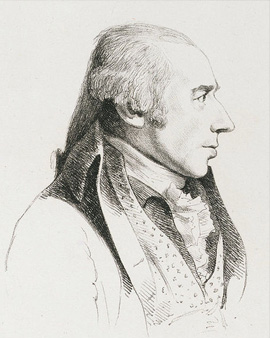The great expeditions of the 18th century mark the appropriation of the world by the European powers. In addition to the scientific exploration of the world, tangible military and economic interests were at the forefront. With his circumnavigations around the world and his exploration of the Pacific Ocean, James Cook laid the foundation for the colonial expansion of the British Empire. The work of the cartographers filled the white spots on the world picture of that time and brought Europe into contact with the most diverse indigenous cultures. Especially the voyages from Cook to the South Seas and to the edge of Antarctica fired the imagination of the people in a country that was at the beginning of an epochal upheaval, the industrial revolution. Parallel to Cook's travelogues, a revolutionary technology, the steam engine, emerged in the industrial centres of England. The discoveries and modern technology formed the basis for the British world power.
As part of the expeditions, in addition to representatives of cartography, the natural sciences and ethnography, a representative of the visual arts always travelled with the expedition, who took on the task of providing the images of the new worlds. For William Hodges, until then known as a theatre and landscape painter, participation in James Cook's second South Sea voyage offered the opportunity to gain popularity and recognition. The selection of Hodges by the Royal Society therefore offered two opportunities. On the one hand, to be the first artist to create the new worlds, on the other hand, to start a new career in his home country after a successful return home. In 1772, two ships under the command of James Cook set off on their round-the-world voyage. After passing Cape Horn, the expedition sailed towards Antarctica and was the first ship to cross the Southern Arctic Circle. This pioneering achievement led, among other things, to a mountain in Antarctica today being named Hodges Knoll after the artist. The ships then set course for the South Seas and New Zealand. Hodges' sketches, which were created during the voyage of discovery, are characterised by the accuracy and detail with which they depict the lives of the locals. The South Seas pictures that appeared later provided Europeans with a place of longing that stood for peaceful and serene life beyond the constraints of civilization. After the return of the expedition in 1775, Hodges was given a position with the Admiralty to work out his sketches and make them into paintings or engravings. Cook's travelogues appeared with Hodges' engravings.
However, the paintings and engravings gave rise to a heated discussion among the expedition participants. The Prussian naturalists Georg and Johann Forster, who had accompanied the expedition scientifically, criticized above all the ethnographic inaccuracies in Hodges' paintings. In the conflict between the South Sea idyll and scientific accuracy, the British painter chose the former. Hodges served the longing of his contemporaries. Everything that contradicted this painting or the moral concepts of the time has only been preserved in the original sketches.
×





.jpg)
.jpg)
_-_(MeisterDrucke-198095).jpg)
_-_(MeisterDrucke-198095).jpg)
.jpg)
.jpg)
_-_(MeisterDrucke-319106).jpg)
_-_(MeisterDrucke-319106).jpg)
.jpg)
.jpg)
 from Bengal Entering in - (MeisterDrucke-569891).jpg)
 from Bengal Entering in - (MeisterDrucke-569891).jpg)
.jpg)
.jpg)
.jpg)
.jpg)
.jpg)
.jpg)
.jpg)
.jpg)
_-_(MeisterDrucke-640763).jpg)
_-_(MeisterDrucke-640763).jpg)
.jpg)
.jpg)
.jpg)
.jpg)
.jpg)
.jpg)
_-_(MeisterDrucke-900557).jpg)
_-_(MeisterDrucke-900557).jpg)
_-_(MeisterDrucke-188977).jpg)
_-_(MeisterDrucke-188977).jpg)
![A View of Matavai Bay in the Island of Otaheite [Tahiti] by William Hodges A View of Matavai Bay in the Island of Otaheite [Tahiti] by William Hodges](/kunstwerke/300px/William_Hodges_-_A_View_of_Matavai_Bay_in_the_Island_of_Otaheite_Tahiti_-_(MeisterDrucke-1433424).jpg)
![A View of Matavai Bay in the Island of Otaheite [Tahiti] by William Hodges](/kunstwerke/400w/William_Hodges_-_A_View_of_Matavai_Bay_in_the_Island_of_Otaheite_Tahiti_-_(MeisterDrucke-1433424).jpg)
.jpg)
.jpg)
.jpg)
.jpg)
.jpg)
.jpg)
.jpg)
.jpg)
.jpg)
.jpg)
.jpg)
.jpg)
_Aurangzebs_Mosque_on_the_River_Ganges_Palace_of_Raja_Abal_Benares_-_(MeisterDrucke-1349745).jpg)
_Aurangzebs_Mosque_on_the_River_Ganges_Palace_of_Raja_Abal_Benares_-_(MeisterDrucke-1349745).jpg)
.jpg)
.jpg)
.jpg)
.jpg)
.jpg)
.jpg)
_from_the_frontispiece_of_Journey_Round_-_(MeisterDrucke-200218).jpg)
_from_the_frontispiece_of_Journey_Round_-_(MeisterDrucke-200218).jpg)
.jpg)
.jpg)
.jpg)
.jpg)
_and_the_Society_Isles_with_a_vi_-_(MeisterDrucke-1482324).jpg)
_and_the_Society_Isles_with_a_vi_-_(MeisterDrucke-1482324).jpg)
.jpg)
.jpg)
.jpg)
.jpg)
.jpg)
.jpg)
_(see_also_179847)_-_(MeisterDrucke-215710).jpg)
_(see_also_179847)_-_(MeisterDrucke-215710).jpg)
.jpg)
.jpg)
.jpg)
.jpg)
.jpg)
.jpg)
.jpg)
.jpg)
.jpg)
.jpg)
.jpg)
.jpg)
.jpg)
.jpg)
_-_(MeisterDrucke-1502084).jpg)
_-_(MeisterDrucke-1502084).jpg)
.jpg)
.jpg)
.jpg)
.jpg)
_-_(MeisterDrucke-151690).jpg)
_-_(MeisterDrucke-151690).jpg)
_one_of_the_New_Hebrides_-_(MeisterDrucke-1500634).jpg)
_one_of_the_New_Hebrides_-_(MeisterDrucke-1500634).jpg)
.jpg)
.jpg)
_-_(MeisterDrucke-201092).jpg)
_-_(MeisterDrucke-201092).jpg)
.jpg)
.jpg)
_-_(MeisterDrucke-286156).jpg)
_-_(MeisterDrucke-286156).jpg)
.jpg)
.jpg)
.jpg)
.jpg)
.jpg)
.jpg)
.jpg)
.jpg)
.jpg)
.jpg)
.jpg)
.jpg)
.jpg)
.jpg)
_-_(MeisterDrucke-1466688).jpg)
_-_(MeisterDrucke-1466688).jpg)
.jpg)
.jpg)
.jpg)
.jpg)
.jpg)
.jpg)
.jpg)
.jpg)
_-_(MeisterDrucke-640764).jpg)
_-_(MeisterDrucke-640764).jpg)
.jpg)
.jpg)
_-_(MeisterDrucke-640760).jpg)
_-_(MeisterDrucke-640760).jpg)
.jpg)
.jpg)
_one_of_the_islands_of_Vanuatu_(formerly_N_-_(MeisterDrucke-1498980).jpg)
_one_of_the_islands_of_Vanuatu_(formerly_N_-_(MeisterDrucke-1498980).jpg)
_-_(MeisterDrucke-182228).jpg)
_-_(MeisterDrucke-182228).jpg)
.jpg)
.jpg)
.jpg)
.jpg)
.jpg)
.jpg)
_-_(MeisterDrucke-297414).jpg)
_-_(MeisterDrucke-297414).jpg)
.jpg)
.jpg)
.jpg)
.jpg)
.jpg)
.jpg)
.jpg)
.jpg)
.jpg)
.jpg)
.jpg)
.jpg)
.jpg)
.jpg)
_one_of_the_New_Hebrides_-_(MeisterDrucke-1504974).jpg)
_one_of_the_New_Hebrides_-_(MeisterDrucke-1504974).jpg)
.jpg)
.jpg)
.jpg)
.jpg)
.jpg)
.jpg)
_(see_also_150249)_-_(MeisterDrucke-906577).jpg)
_(see_also_150249)_-_(MeisterDrucke-906577).jpg)
.jpg)
.jpg)
.jpg)
.jpg)
.jpg)
.jpg)
.jpg)
.jpg)
.jpg)
.jpg)
.jpg)
.jpg)
_(New_Zealand)_with_a_Maori_family_Engravi_-_(MeisterDrucke-1498625).jpg)
_(New_Zealand)_with_a_Maori_family_Engravi_-_(MeisterDrucke-1498625).jpg)
.jpg)
.jpg)
.jpg)
.jpg)
.jpg)
.jpg)
.jpg)
.jpg)
.jpg)
.jpg)
.jpg)
.jpg)
.jpg)
.jpg)
.jpg)
.jpg)




